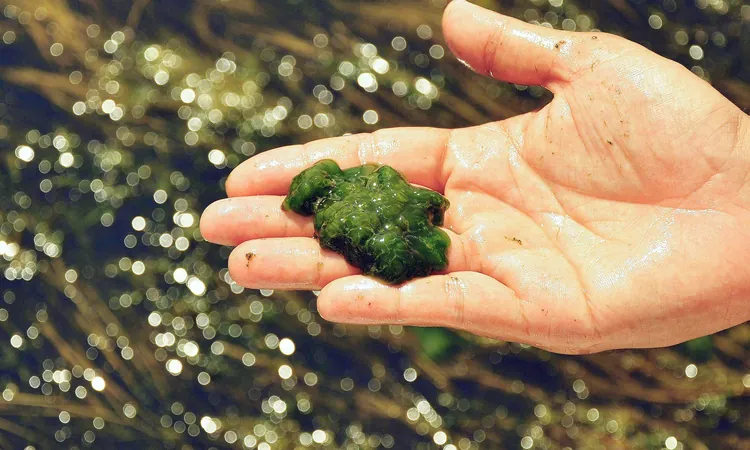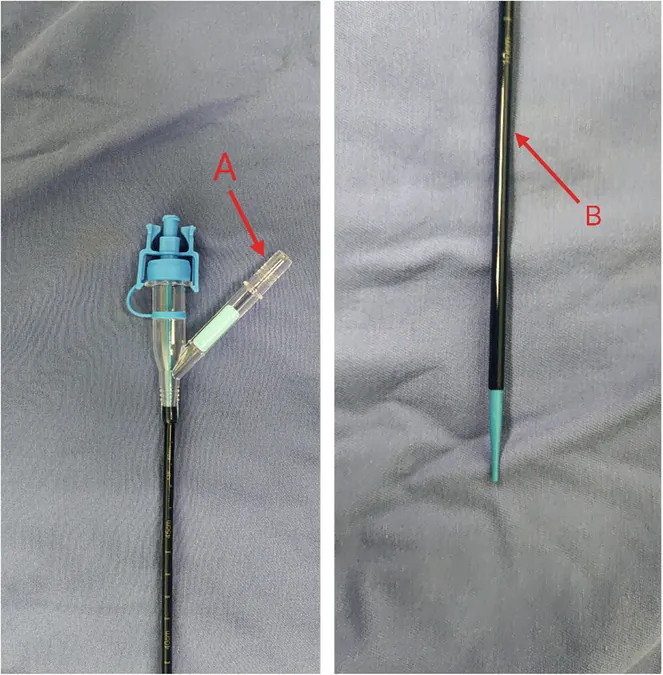
Revolutionary Discovery: Giant Dormant Virus in Algae Could Transform Gene Editing
2025-08-16
Author: Arjun
A Hidden Marvel: Unveiling the Giant Punuivirus
In a groundbreaking revelation, researchers have unveiled a giant virus lurking within a common green alga, shedding light on the mysterious world of viral integration within single-celled organisms. This stealthy giant, known as the punuivirus, had eluded detection for decades while cohabiting with its algal host.
Why This Discovery Matters
The discovery of punuivirus challenges existing beliefs about viral sizes and behaviors. Unlike typical viruses that aggressively invade and kill their hosts, this giant virus integrates its DNA into that of the algae, entering a dormant state before reactivating to produce new viral particles, all while keeping the host alive.
This finding not only deepens the understanding of how viruses operate within algae but also has implications for ecosystems, suggesting that these dormant viruses might play a role in the genetic exchange across various environments. The potential for punuivirus to influence evolutionary processes makes it a fascinating subject for biologists.
Insights from the Study
Led by Virginia Tech scientists Maria Paula Erazo-Garcia and Frank Aylward, the study identified the punuivirus genome, which is a staggering 617,000 base pairs long. This size places it among the largest known double-stranded DNA viruses, indicating just how complex these giant pathogens can be.
Researchers discovered that the punuivirus genome contains an integrase enzyme that allows the virus to insert its genetic material into the host's chromosome. Additionally, it possesses Fanzor nucleases, which mimic the gene-editing capabilities of CRISPR, offering a potential new avenue for biotechnology.
The Promise of Gene Editing
The implications of punuivirus in gene editing are enormous. As it seamlessly integrates and excises its DNA, it offers biotechnologists a powerful tool for delivering large genetic payloads into algal or plant genomes more efficiently than current methods.
Aylward emphasized that this research reveals a new dimension of viral behavior, particularly in how an organism can remain healthy even while allocating extensive portions of its genome to a virus. The possibility of utilizing Fanzor nucleases for gene editing could revolutionize techniques, especially in species where traditional CRISPR methods face hurdles.
Looking Ahead: Exploring Environmental Triggers
The research team is now focused on decoding the mechanisms that prompt punuivirus to shift from dormancy to activity. They plan to identify environmental cues—such as light, nutrients, or stress—that may trigger this transition, opening doors to innovative strategies for controlled gene expression.
As ecologists turn their attention to other ecosystems, there's a possibility that latent viruses like punuivirus are widespread, hinting at a hidden layer of genetic traffic that could reshape our understanding of microbial evolution and carbon cycles.
Conclusion: The Secrets of the Algal World Unveiled
This discovery highlights that even in familiar laboratory organisms, astonishing secrets await discovery. As researchers continue to explore the hidden depths of microbial life, the implications for gene editing, ecological understanding, and biotechnology appear vast and exciting. The future of these dormant giants may hold the key to breakthroughs in science and technology.




 Brasil (PT)
Brasil (PT)
 Canada (EN)
Canada (EN)
 Chile (ES)
Chile (ES)
 Česko (CS)
Česko (CS)
 대한민국 (KO)
대한민국 (KO)
 España (ES)
España (ES)
 France (FR)
France (FR)
 Hong Kong (EN)
Hong Kong (EN)
 Italia (IT)
Italia (IT)
 日本 (JA)
日本 (JA)
 Magyarország (HU)
Magyarország (HU)
 Norge (NO)
Norge (NO)
 Polska (PL)
Polska (PL)
 Schweiz (DE)
Schweiz (DE)
 Singapore (EN)
Singapore (EN)
 Sverige (SV)
Sverige (SV)
 Suomi (FI)
Suomi (FI)
 Türkiye (TR)
Türkiye (TR)
 الإمارات العربية المتحدة (AR)
الإمارات العربية المتحدة (AR)